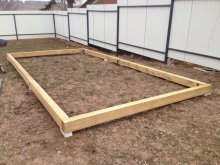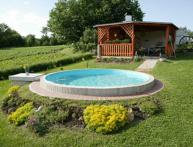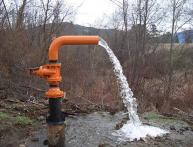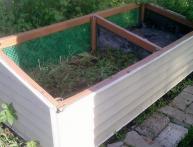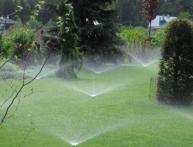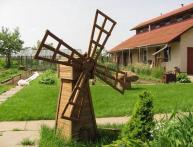Foundation for a polycarbonate greenhouse: creation technology

Any structure requires a reliable foundation, and a polycarbonate greenhouse is no exception. It is important not only to choose the right foundation, but also to install the foundation for the future structure.
Content:
- The need for a foundation: why is it needed?
- Materials and tools for work
- Construction of a beam foundation: step-by-step instructions
The need for a foundation: why is it needed?
During construction greenhouses made of polycarbonate, it is worth thinking about the construction of the foundation. It is impossible to install the greenhouse without fastening, even despite its light weight. The base must be strong and reliable, otherwise this may lead to the following consequences:
- Structural subsidence
- Death of plants inside the greenhouse
- Deformation due to weather conditions
In spring, the structure may lean due to soil movement. As a result, the supporting profiles will undergo deformation, the material itself will crack and the structure will lose its appearance. Thanks to the foundation, the soil and the greenhouse itself will not freeze. A solid foundation will prevent excessive moisture from entering the structure.
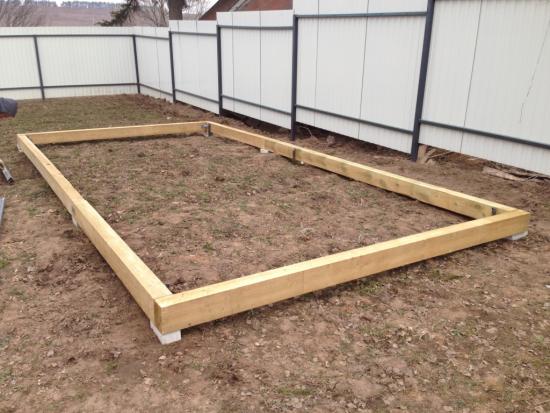
In addition, the foundation allows you to build high beds. They are not only convenient to process, but they are also less susceptible to freezing in winter. There are several types of foundations for polycarbonate greenhouses:
- Brick
- Blocky
- Monolithic
- Brusovy
- Spot
A brick foundation is stronger than a wooden one, but inferior to a strip foundation. It is recommended to install a point base in areas where there is excessive soil moisture. A monolithic foundation is suitable for constructing a large greenhouse, as well as on loam, peat or clay areas. The most common and simplest type of foundation is timber.
The main advantages of this type: mobility, low cost, speed of construction. It is recommended to use a mobile wooden box when moving the structure to another location. The complexity of the work depends on the type of material chosen for the foundation.
Materials and tools for work
If you plan to install a foundation made of timber, then you need to prepare the following materials and tools:
- Beam (section 12x12 cm)
- Construction corners
- Anchor bolts
- Self-tapping screws
- Waterproofing material
- Mixture for processing beams
- Saw
- Knife
Depending on the size of the future greenhouse, choose the size of the beams. Once all the necessary materials have been prepared, you can begin installing the foundation.
Construction of a beam foundation: step-by-step instructions
Installation of a greenhouse foundation consists of several stages. This is preparing the area, creating a frame and installing the box.
Video about installing a foundation for a greenhouse:
Preparation of territory and material. First you need to dig a trench around the perimeter of the future structure. Treat the beams with an antiseptic to protect against mold and fungi diseases. If the site is not level, then it will take time and a lot of work to ensure that the future greenhouse is level.
Creating a frame. Cut out a quarter at the ends and fasten the joints with self-tapping screws.It is important that the timber foundation be in the shape of a rectangle and correspond to the size of the future structure. Otherwise, the base may be subject to deformation.
Next, level the frame using a building level. The diagonals of the base should not differ by more than 2 cm. Installation of the box. Place waterproofing material at the bottom of the trench and press it against the beam on each side.
Instead of waterproofing material, you can use a gravel base. It also protects the structure from the negative effects of excessive humidity. Next, place the frame and fill the rest of the space with soil. To make the base more stable, you can strengthen it with brick pillars.
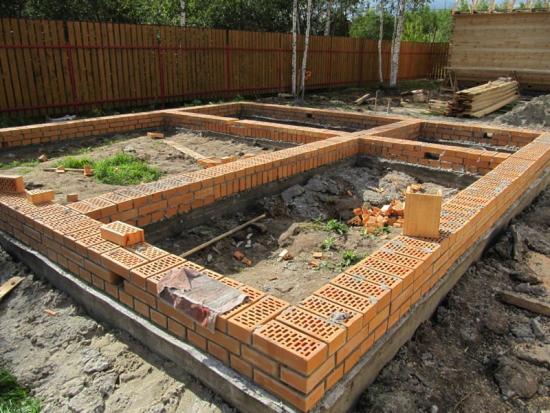
They can be placed in the corners or laid along the perimeter of the foundation. Then the beams are laid on bricks, and the bottom layer must be made of a sand cushion. In regions with heavy rainfall, it is recommended to additionally protect the foundation. Along the edges of the roof, make gutters around the perimeter or make a concrete blind area. In this case, the service life of the foundation can be extended.

